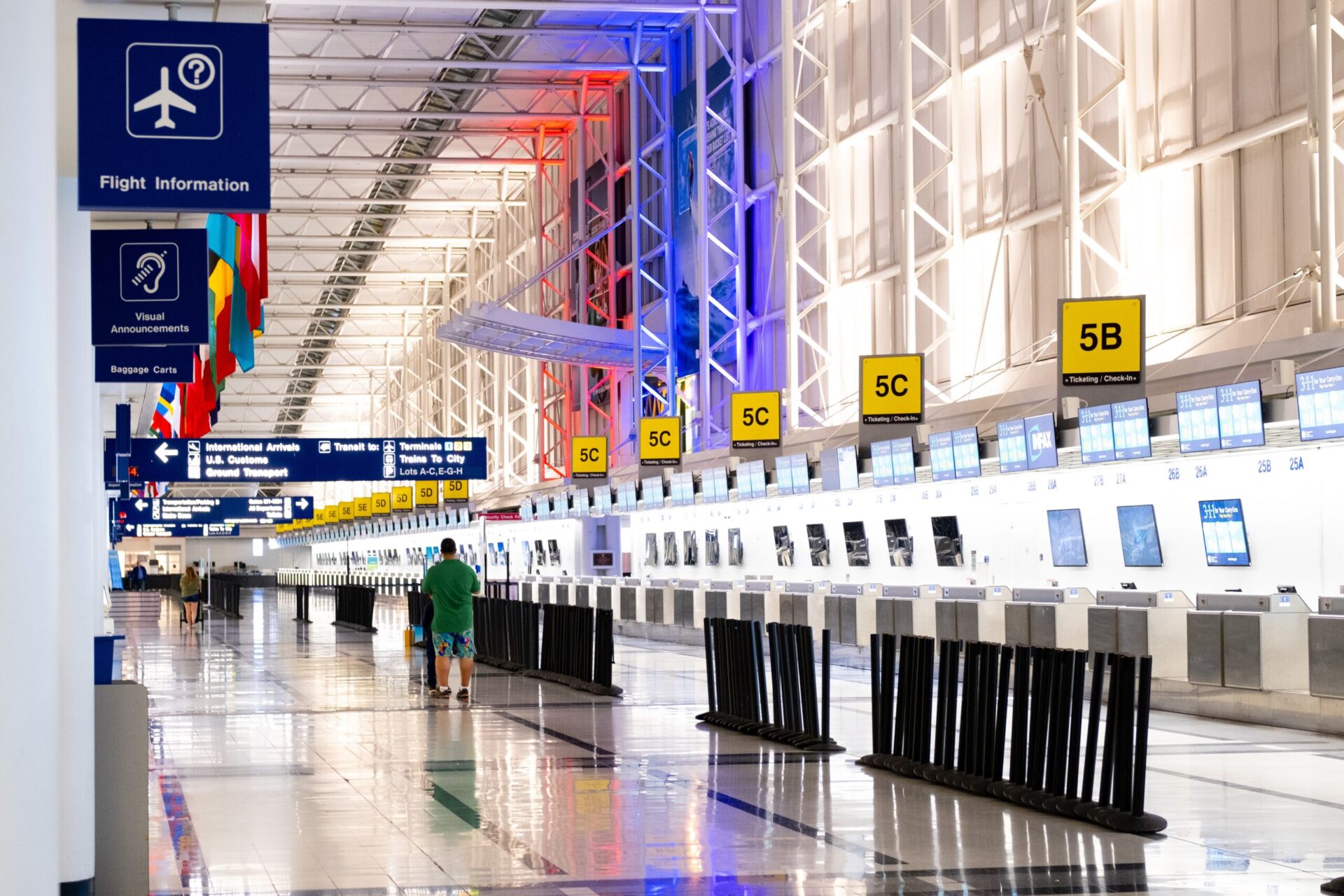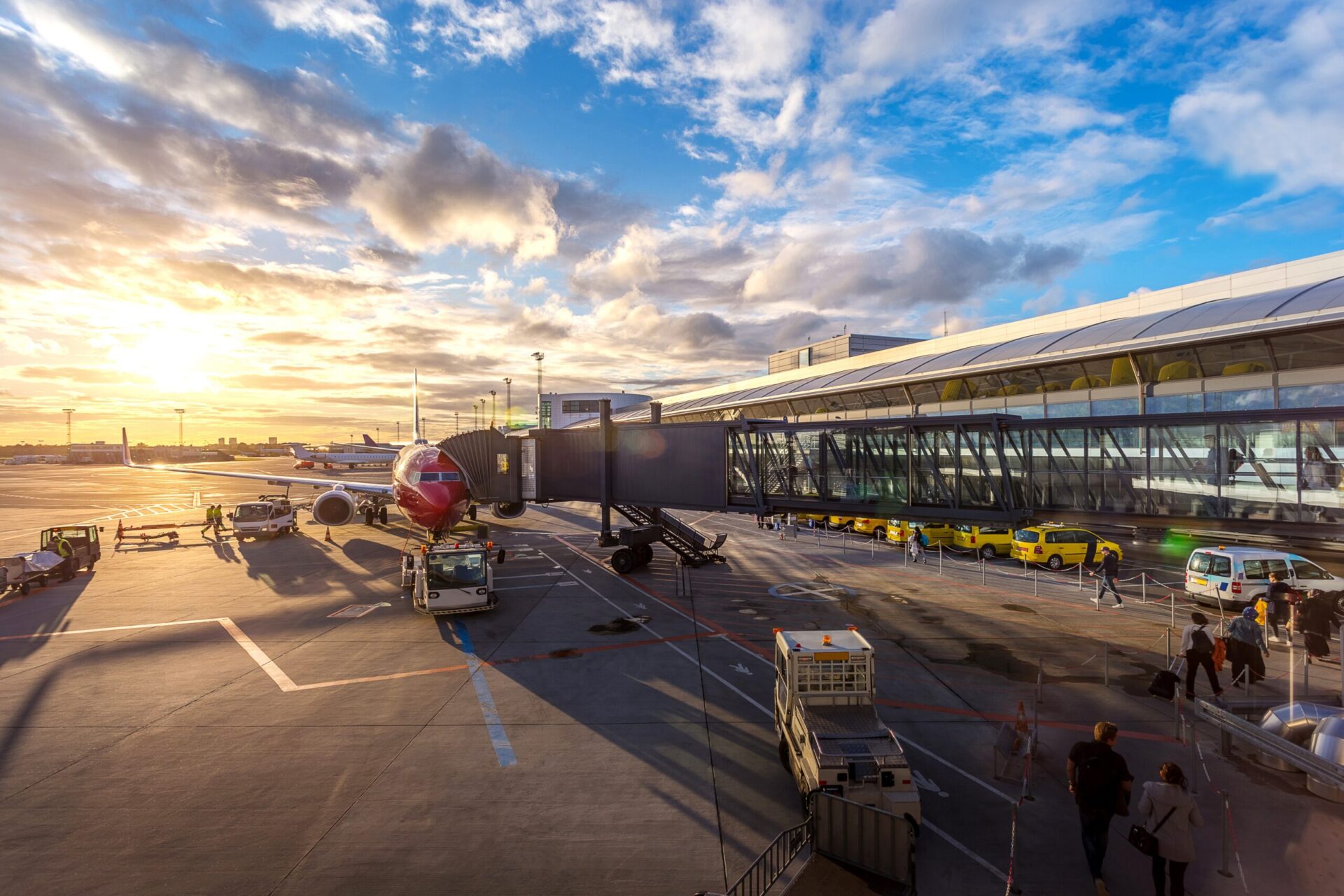Traveling on an Airplane with a Mobility Scooter
Have you ever wondered what it is like traveling on an airplane with a mobility scooter? Many of our customers inquire about the details of traveling with their devices, however, the concept might raise questions or concerns. Checking in, going through security, boarding, and deplaning with a scooter is easier than it seems! We took four flights across the United States to document the exact procedure and answer all the questions you might have. In addition, we will explain the rights you have as a passenger with a disability, according to the Americans with Disabilities Act and the U.S. Department of Transportation.
For a complete video demonstration of this blog, check out the Youtube video below:

To request a copy of our FREE product catalog that contains many travel-friendly scooters and more, click here: https://www.mobilityscootersdirect.com/product-brochure
Your Rights as an Airline Passenger with a Disability
During air travel, the rights of Americans with disabilities are protected by both the ADA and the U.S. DOT, to ensure equal access and that you receive the necessary assistance and accommodations. One of the key documents is the “Air Carrier Access Act” (ACAA), which outlines the “Airline Passengers with Disabilities Bill of Rights”:
1. The Right to Be Treated with Dignity and Respect.
2. The Right to Receive Information About Services and Aircraft Capabilities and Limitations.
3. The Right to Receive Information in an Accessible Format.
4. The Right to Accessible Airport Facilities.
5. The Right to Assistance at Airports.
6. The Right to Assistance on the Aircraft.
7. The Right to Travel with an Assistive Device or Service Animal.
8. The Right to Receive Seating Accommodations.
9. The Right to Accessible Aircraft Features.
10. The Right to Resolution of a Disability-Related Issue.
Within these rights, it is stated that airlines must accept a battery-powered assistive device, “…if it fits in the cargo compartment and can be transported consistent with safety and security requirements.” Although it is not specifically outlined, airlines can fit up to mid-sized and some smaller full-sized mobility scooters in most cases. Additionally, any device does not count towards your carry-on or baggage limit and is required to be stowed free of charge. We always recommend that you contact your airline ahead of time to confirm that your device will fit, especially if you are traveling on a smaller plane.
Now, let’s go over the steps of traveling with your device!
Checking In

Our journey began at the Wilkes-Barre International Airport in Pennsylvania after a visit to one of our top manufacturers, Golden Technologies. We used their model, the Golden Buzzaround Carry-On (GB120), during all of our flights for a stress-free experience.
First and foremost, you must identify what type of batteries are in your device. If your scooter uses sealed lead acid (SLA) batteries, they can remain in the scooter for your entire trip. If your scooter uses lithium-ion batteries, you must identify the watt-hours and ensure they are less than 300 watt-hours. You can calculate the watt-hours by multiplying the voltage and capacity of the battery (ex. 12v12ah = 144 watt-hours). Travel-friendly scooters with lithium batteries will come with a specification sheet to show the airline that it is under 300 watt-hours and FAA-compliant. Lithium batteries must be removed before gate-checking your scooter and brought on the plane with you.
When traveling with a scooter, arriving 1-hour ahead of the normal check-in time is best. After arriving at the airport, the first thing to do is go to the check-in area and declare that you will be traveling with a mobility scooter. It is important to inform the staff if your scooter has a lithium battery. Make sure to show them the specification sheet to confirm it is FAA-approved. From there, let them know if you would like to baggage or gate-check your scooter. Gate-checking is our recommendation because you can remain on your scooter until boarding, it reduces the risk of it being lost in transit, and it ensures your scooter will be readily available promptly after your flight arrives. The staff will give you an allocated tag to convey that it is an assistive device and include your personal/trip information.
Going Through Airport Security
If you choose to gate-check and remain on your scooter while going through security, it is a lengthier process. Remove all your belongings and anything else you are able to (shoes, jackets, etc.) to put them through the X-ray machine. Then, since you are on the scooter and unable to go through the full-body machine, the security agents will redirect you to a separate area for a thorough screening process. An agent will complete a full-body pat-down to check for anything on your person. They will check and swab your scooter for explosives, to ensure the safety of everyone on your flight. After everything is cleared, you can collect your belongings and advance to the gate!
Gate-Checking and Boarding the Plane

Once at your gate, you can choose to speak with the gate attendant and let them know you are traveling with a disability/assistive device. This is solely a matter of preference, but most times it does allow you to board the plane before other passengers. This way, you have plenty of time to check your device, transfer to a manual chair if necessary, and comfortably find your seat.
When it is your turn to board, proceed to the gate to scan your boarding pass and continue to the jet bridge. To gate-check your scooter, you will ride it to the very end of the jetbridge, where the strollers are checked. We recommend leaving the scooter as is, without folding or disassembling it, in order to reduce the risk of damage. For our flights, we removed the key, basket, and placed the lithium battery in our carry-on luggage. The staff will scan your scooter and store it beneath the plane. If you are able to, you can proceed to board the plane and find your seat. If you require a manual chair to board and transfer to the airplane seat, the airline will provide one for you. Once at your seat, get settled and enjoy the plane ride!
Deplaning
After you have arrived at your destination, it is time to deplane and return to your mobility scooter. If you chose to bag-check your scooter, it will be available at baggage claim with the rest of your luggage. If you gate-checked it, it should be waiting for you right at the end of the jetbridge where you dropped it off. Then, all you have to do is place your battery in it and replace the basket if you removed it for the flight. Proceed to baggage claim to pick up any luggage or belongings you checked and you are done!
Important Tips in Case of Damage:
Despite any precautionary measures, there is always the possibility of your mobility scooter getting damaged. Whether this is from mishandling or turbulence, the Air Carrier Access Act (ACAA) mandates that airlines must compensate you accordingly. If your scooter is damaged, ask the airline staff or baggage office to speak with a Complaint Resolution Officer (CRO) about a disability-related complaint. The ACAA states that a CRO must be available at all times, namely for cases like this. The staff will redirect you to the correct employee or connect you to a CRO on the phone. Make sure to document the name of the CRO you spoke to, as well as the date and time. Furthermore, take photos and videos to thoroughly record all of the damage.
Once at your destination, be sure to contact the Department of Transportation (DOT) and file an ACAA violation. Most times, these cases resolve fairly quickly. The airlines are typically responsible for reimbursing you for parts/labor, a rental scooter, or the original cost of your scooter (depending on the damage accrued). The DOT online form can be accessed here.
Final Thoughts
It might seem daunting to fly with your mobility scooter, although, once you know your rights and the process, it can be a breeze! In the United States, the ACAA protects you and your scooter to provide an accessible air experience. Hopefully, our personal experience and guide informs you of the proper steps to have a worry-free flight and memorable adventures. If you have any questions or inquiries, you can feel free to reach out to us. We have non-commissioned sales experts ready to help find the right scooter for you. Thank you for reading!
Don’t forget to subscribe to our Youtube Channel for a chance to win a FREE MOBILITY SCOOTER!

References:
Wheelchairs and Other Assistive Devices. U.S. Department of Transportation. (n.d.-d). https://www.transportation.gov/individuals/aviation-consumer-protection/wheelchairs-and-other-assistive-devices
Traveling with a Disability. U.S. Department of Transportation. (n.d.-b). https://www.transportation.gov/individuals/aviation-consumer-protection/traveling-disability#:~:text=The%20Air%20Carrier%20Access%20Act%20(ACAA)%20is%20a%20law%20that,or%20within%20the%20United%20States.
Airline Passengers with Disabilities Bill of Rights. U.S. Department of Transportation. (n.d.-a). https://www.transportation.gov/airconsumer/disabilitybillofrights
PackSafe – Wheelchairs and Mobility Devices. PackSafe – Wheelchairs and Mobility Devices | Federal Aviation Administration. (n.d.). https://www.faa.gov/hazmat/packsafe/wheelchairs-mobility-devices
Battery Powered Wheel Chairs and Mobility Devices. Battery powered wheel chairs and mobility devices | Transportation Security Administration. (n.d.). https://www.tsa.gov/travel/security-screening/whatcanibring/items/battery-powered-wheel-chairs-and-mobility-devices
Guide to Disability Rights Laws. ADA.gov. (2023, July 7). https://www.ada.gov/resources/disability-rights-guide/#air-carrier-access-act
Andrew Fatalo is the owner of Statewide Mobility Inc & Mobility Scooters Direct. He has been in the mobility product industry since 2005 and knows a ton about e-commerce marketing. He gives back to the handicap community by hosting mobility scooter and electric wheelchair give-aways which you can learn more about by following his companies on Facebook.




